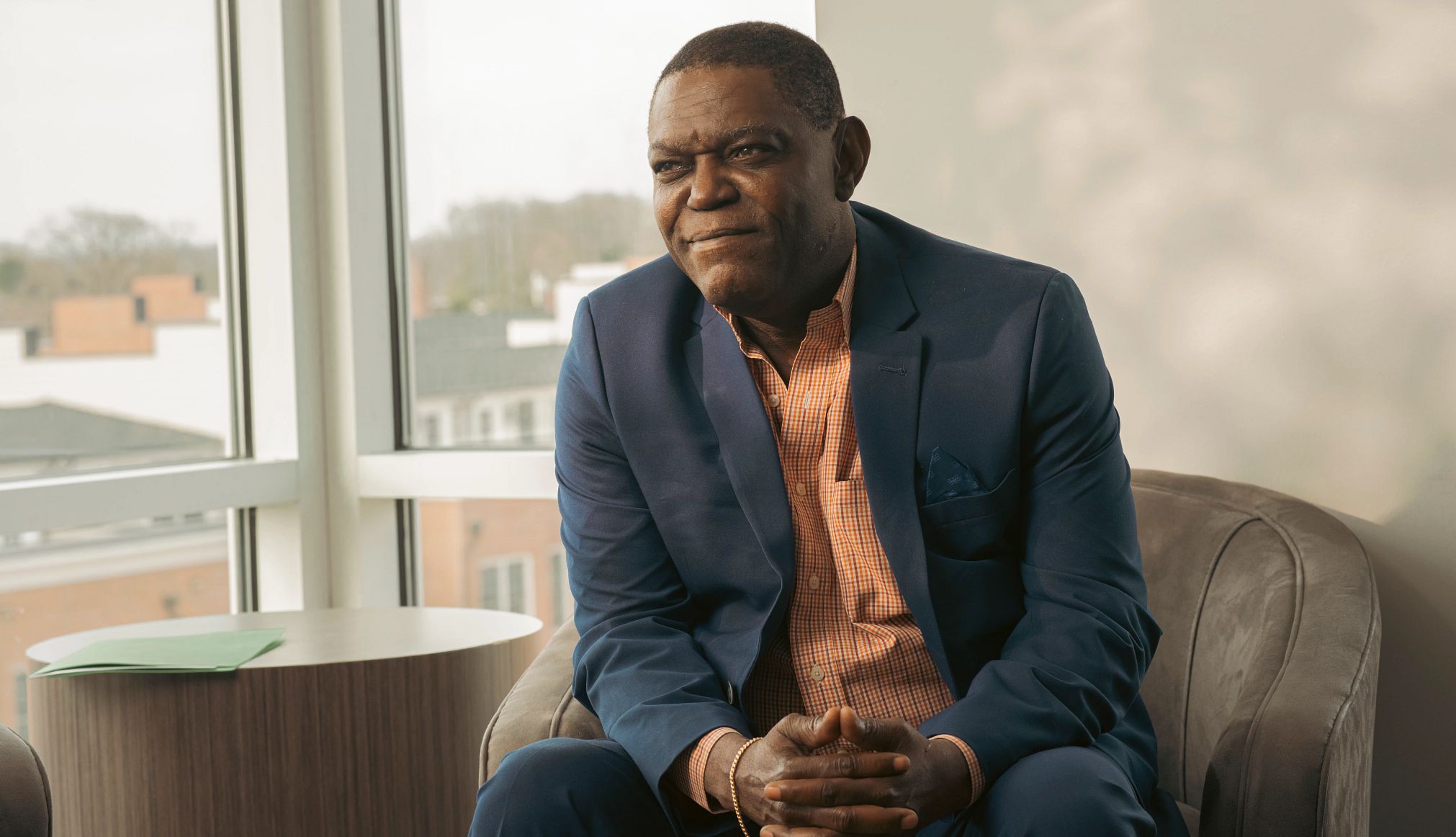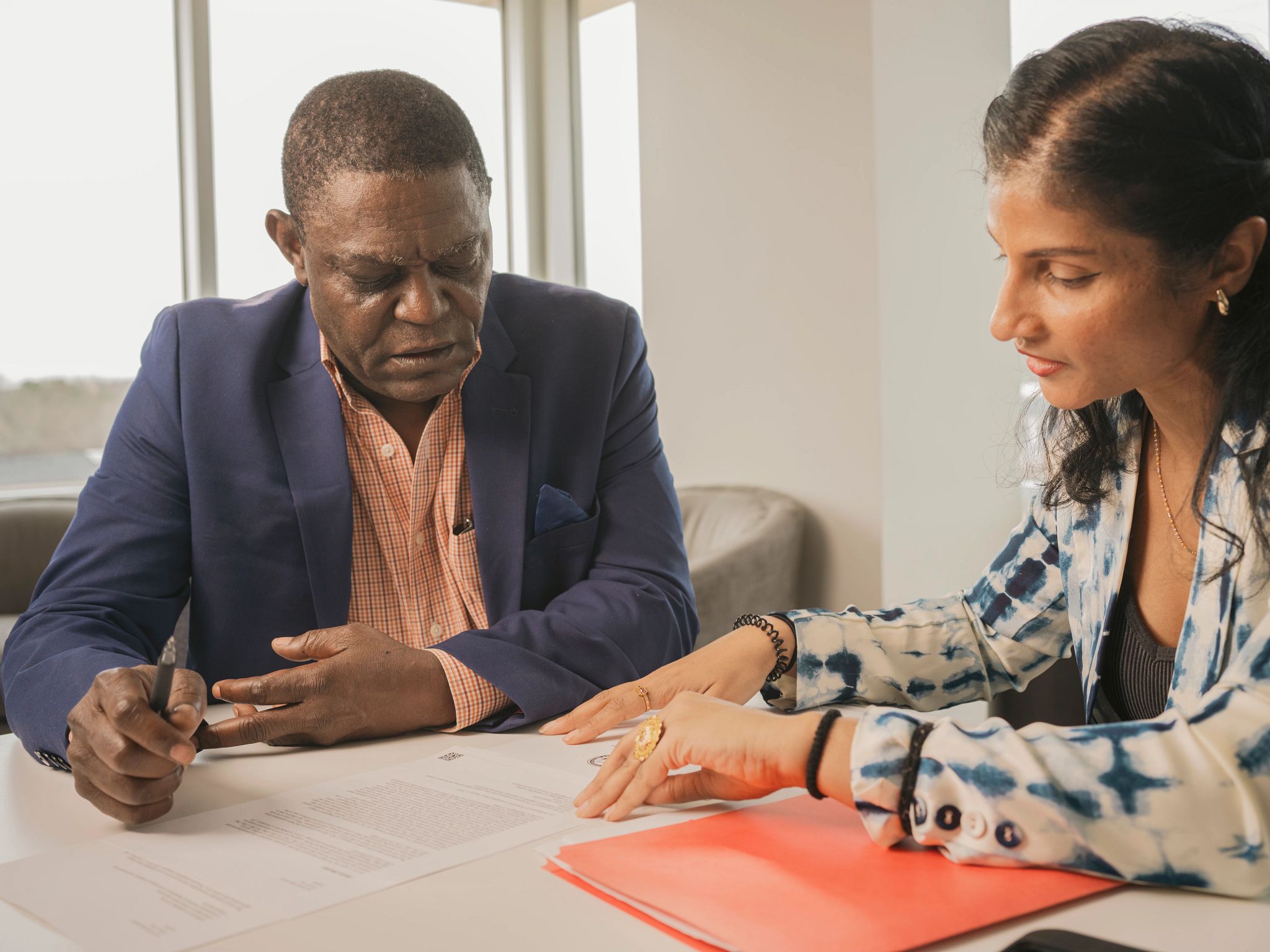AARP Hearing Center


The process for filing disability claims with the U.S. Department of Veterans Affairs (VA) is notoriously complex, often leaving veterans without the benefits and support they’ve earned and were promised. Former service members like Butler Obasogie, 64, know this struggle all too well.
Obasogie served in the U.S. Navy from 1991 to 1993 during the Gulf War, working aboard a ship in the Persian Gulf where he helped supply ammunition and other materials in support of operations on the ground. He later served in the Army, from 1996 to 1998, as a medic. Today he lives in Washington, D.C., largely confined to his home due to serious health conditions he says stem from his military service — including prostate cancer and chronic pain that requires him to stay close to a bathroom at all times.
“I don’t leave the house,” he says. “I don’t take care of my hygiene myself. So if I get full disability [benefits], maybe I can improve — take better care of myself and do something.”
Despite his challenges, Obasogie finds purpose in helping his children financially, especially now that he receives some disability benefits. But the road to even that partial compensation was long and grueling. For more than two decades, he submitted paperwork, gathered medical records and waited — only to be told, again and again, that it wasn’t enough.
When he finally received an approval letter, it came with a costly mistake: an incorrect effective date, or the date on which benefit payments were to begin. It cost him over a year’s worth of back pay — money he desperately needed to visit relatives overseas and support his family at home.
His experience isn’t unique. Across the country, veterans are being misled or misrepresented by a network of systems meant to support them. A March 2025 government watchdog report raised concerns that while about 75 percent of veterans receive accredited help from providers like veteran service organizations (VSOs) and attorneys, the VA’s accreditation office is falling short. It struggles to protect veterans from unaccredited individuals, has insufficient IT system capabilities and lacks automation for basic tasks. Staffing shortages have also led to backlogs and delays, the Government Accountability Office (GAO) found.
The VA touts its record pace in disability claims processing: It issued more than 1 million decisions before the midpoint of the 2025 federal fiscal year (the fastest it had ever reached that milestone), with an approval rate above 60 percent. But those numbers don’t tell the full story. The remaining 40 percent of those claims were denied, and among the approved cases, some veterans received incorrect payments.
An April 2025 review of PACT Act claims — in 2022, the PACT Act expanded VA health care and benefits for those exposed to burn pits, Agent Orange and other toxic substances — found that nearly 1 in 4 veterans were assigned the wrong effective date. This resulted in an estimated $6.8 million in improper payments, which could include overpayments, underpayments, payments made to ineligible veterans and payments made without the required documentation, according to the report from the VA’s Office of Inspector General (OIG).
A system built to help but failing
Obasogie’s health issues stemmed from his Navy service during the Gulf War. He spent long days embedded in combat, supplying ammunition and maintaining his ship. For roughly 16 hours a day, seven days a week, he stood on its iron deck performing his duties, never realizing that the chronic pain in his feet, back and knees was rooted in an undiagnosed condition: flat feet.
That physical toll was compounded by emotional trauma. A Nigerian immigrant, Obasogie says he endured persistent harassment during his time aboard the ship, which contributed to long-term depression. On top of that, he later developed prostate cancer — a condition the VA now presumes to be caused by exposure to toxic substances during Gulf War service, which Obasogie experienced during his deployment.



































































More From AARP
Celebrating 100 Years of Valor
Bill Logan, a WWII hero, reflects on a century of resilience
9 Military Charities That Help and Honor Veterans
Here’s how you can give back to those who risked everything for our country
African American Veterans: A History of Heroism
From the Civil War to the present day, these soldiers performed acts of heroism, valor